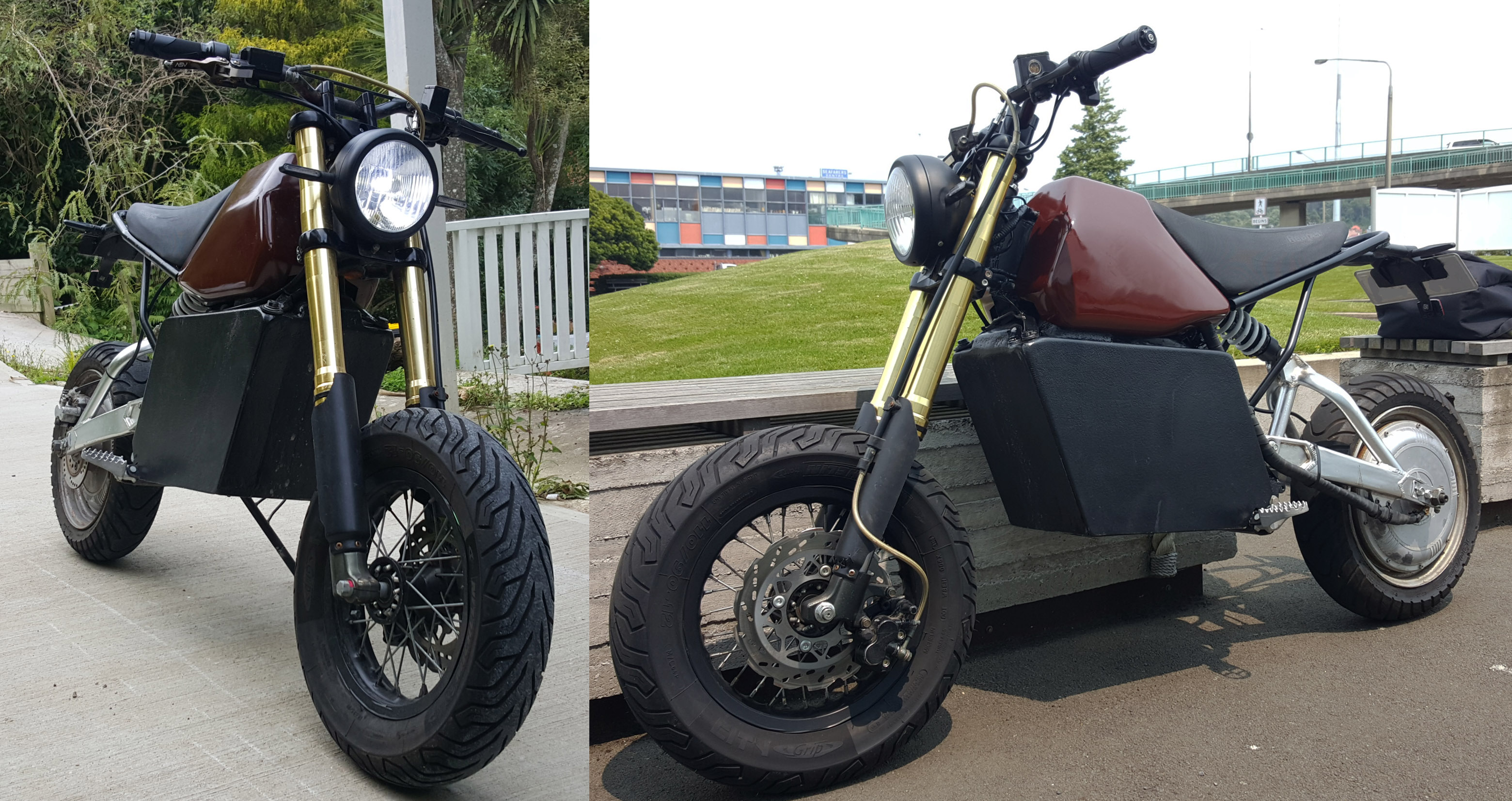update: I got the power calculation completely wrong, the bike actualy is only 5kW. Turns out although the controller says it's 350A, in reality it only draws 90A maximum from the battery, so after some losses and such, the final power is actually around just 5kW. It still feels crazy powewrful, but now I got all new respect for actual hi-power ebikes.
Good day everyone, finally after years of asking dumb questions and lurking the forum, I got something to show for it. Behold my first proper hi power ebike build:
Video here: https://youtu.be/KjFG3U_XsnU

Thank you John in CR, amberwolf, Dauntless,"Dui, ni shuo de dui", icherouveim, flippy, bamitsram, john61ct, billvon, Voltron, Juwe, ripperton and many many others I forgot, for your unrelenting helpfulness.
Some tech specs:
Battery
10 Gen1 Nissan Leaf modules with 65% SOH
Controller
Kelly KLS-N 350A Sinewave, Bluetooth programmable with proportional regen. https://kellycontroller.com/shop/kls-mn/ (I love it, except for slow takeoff from standstill - there isn't anything better at that price anyway)
BMS
no BMS currently, I bought a bluetooth ANT ebike one, but I killed it by electrostatic discharge when I touched it accidentally. Cells stay perfectly balanced nevertheless! I will probably not get a BMS again, just use a cheap RC charger for occasional balancing (that will probably not be needed anyway since the Leaf cells are so disciplined on their own)
Motor
QS Motor 3500W rated 13" scooter hub. I run it as fast as I can drive uphill downhill all day, and it gets slightly uncomfortable to the touch, but can still keep my hand on it.
Charger
You'll love this one: it's 6 Lime scooter chargers. Each does 42V/2A, so I got 3 parallel, 2 series. Gives me 6A@84V. And it works! Those chargers are built well, they are cheap because people are getting rid of them (juicing get sless profitable)
I really love the bike, it's so powerful and capable. Also cheap and practical, will destroy anything in the city traffic, and is also not too slow for small countryside roads. And wasn't expensive to build - I probably spent less than 2000 USD for parts, including material and parts I didn't end up using or broke.
Good day everyone, finally after years of asking dumb questions and lurking the forum, I got something to show for it. Behold my first proper hi power ebike build:
Video here: https://youtu.be/KjFG3U_XsnU

Thank you John in CR, amberwolf, Dauntless,"Dui, ni shuo de dui", icherouveim, flippy, bamitsram, john61ct, billvon, Voltron, Juwe, ripperton and many many others I forgot, for your unrelenting helpfulness.
Some tech specs:
Battery
10 Gen1 Nissan Leaf modules with 65% SOH
Controller
Kelly KLS-N 350A Sinewave, Bluetooth programmable with proportional regen. https://kellycontroller.com/shop/kls-mn/ (I love it, except for slow takeoff from standstill - there isn't anything better at that price anyway)
BMS
no BMS currently, I bought a bluetooth ANT ebike one, but I killed it by electrostatic discharge when I touched it accidentally. Cells stay perfectly balanced nevertheless! I will probably not get a BMS again, just use a cheap RC charger for occasional balancing (that will probably not be needed anyway since the Leaf cells are so disciplined on their own)
Motor
QS Motor 3500W rated 13" scooter hub. I run it as fast as I can drive uphill downhill all day, and it gets slightly uncomfortable to the touch, but can still keep my hand on it.
Charger
You'll love this one: it's 6 Lime scooter chargers. Each does 42V/2A, so I got 3 parallel, 2 series. Gives me 6A@84V. And it works! Those chargers are built well, they are cheap because people are getting rid of them (juicing get sless profitable)
I really love the bike, it's so powerful and capable. Also cheap and practical, will destroy anything in the city traffic, and is also not too slow for small countryside roads. And wasn't expensive to build - I probably spent less than 2000 USD for parts, including material and parts I didn't end up using or broke.

